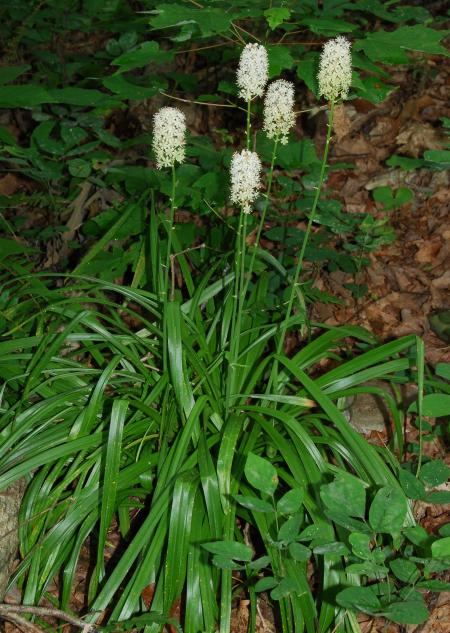Amianthium muscitoxicum (Walter) A. Gray
Fly Poison

Native
CC = 10
CW = 0
MOC = 13
© SRTurner
Amianthium muscitoxicum (Walter) A. GrayFly Poison | |
 |
Native CC = 10 CW = 0 MOC = 13 |
© SRTurner |
|
Family - Liliaceae Habit - Perennial forb, from a bulb. Stems - 30-100 cm, erect, unbranched, glabrous. Plant lacks odor of onion or garlic.
Leaves - Mostly basal, to 45 cm, linear, straplike, weakly pleated longitudinally. Stem leaves greatly reduced.
Inflorescences - Dense terminal racemes of numerous flowers. Flower stalks 12-18 mm long, longer than the flowers, elongating in fruit, subtended by small bracts.
Flowers - Perianth 2.5-4.5 mm long, the sepals and petals free, white, turning yellow to green to purplish tinged after flowering. Stamens 6. Styles 3, each with a small stigma. Ovary superior, with 3 locules, each with 2 ovules
Fruits - Ovoid, deeply 3-lobed capsules; lobes beaked with persistent styles.
Flowering - May - July. Habitat - Mesic upland forests, lower slopes of ravines, north-facing slopes. Typically on acid substrates. Origin - Native to the U.S. Lookalikes - None when flowering. Other info. - This striking species can be found mainly in the most southern counties of Missouri but a few disjunct populations are found in counties along the Missouri River. It is more common in southeastern states and into parts of New England. The plant can be identified by its long, thin basal leaves, and its dense, cylindrical inflorescence of many small, white flowers. The flowers typically change from white to yellow or even purplish with age. Photographs taken in the Appalachicola National Forest, FL., 3-30-05 (DETenaglia); also at Poison Hollow, Howell County, MO, 6-4-2017 and 6-11-2021 (SRTurner). |